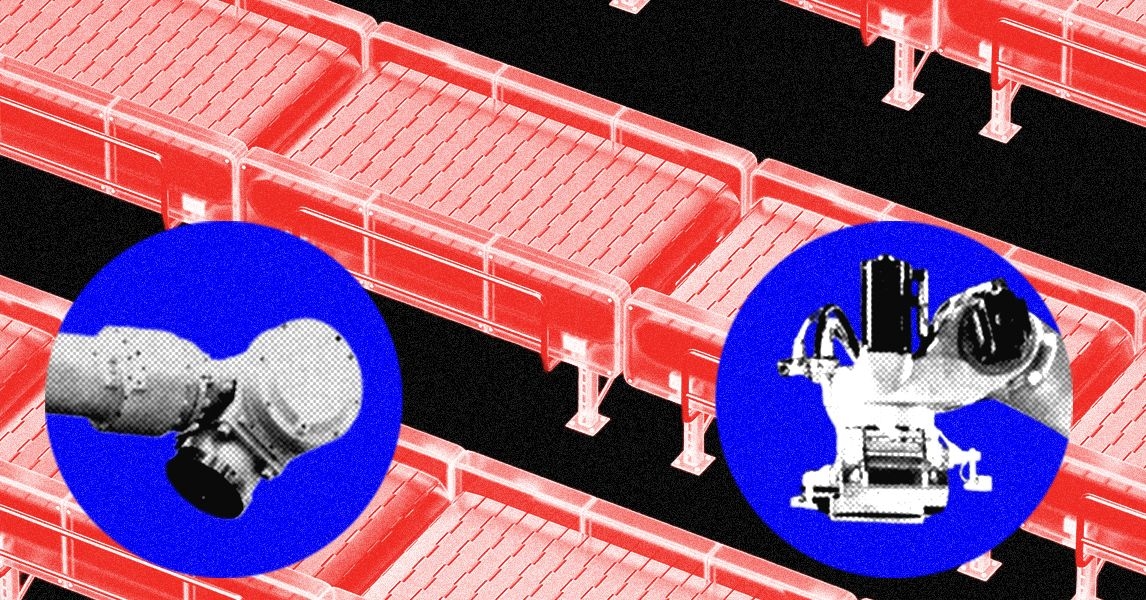Meet the Chinese Startup Using AI—and a Team of Human Workers—to Train Robots

AgiBot, a humanoid robotics company based in Shanghai, has engineered a way for two-armed robots to learn manufacturing tasks through human training and real-world practice on a factory production line.
The company says its system, which combines teleoperation and reinforcement learning, is being tested on a production line belonging to Longcheer Technology, a Chinese company that manufactures smartphones, VR headsets, and other electronic gadgets.
AgiBot’s project shows how more advanced AI is starting to change the abilities of industrial machines—an innovation that may creep into new areas of manufacturing in China and elsewhere. The trend may increase manufacturing productivity and could allow products to be made with fewer low-wage human workers. This might lead to some jobs disappearing, but new ones being created.
Robots are widely used in factories for chores like lifting boxes and moving bins. But the work involved in assembling, say, an iPhone requires dexterity, deft sensing, and adaptation—things that robots generally lack. While AI is increasingly used to help robots do things like spot items moving along conveyor belts and decide how to grasp them, it is not yet a reliable tool for training them to do complex manipulation.

AgiBot G2 in action.
Courtesy of AgiBotAgiBot representative Yuheng Feng says the robot deployed at the Longcheer plant takes components from a machine that performs testing, then places them onto a production line—the kind of task robots can handle because it does not involve fine manipulation or working with bendable or fragile parts.
The real question is how effectively AgiBot’s algorithms can teach its robots new tricks. Using reinforcement learning to teach a robot tasks that require improvisation generally requires a lot of training data, and studies show it cannot be perfected entirely inside a simulation.
AgiBot speeds up the learning process by having a human worker guide the robot through a task, which provides a foundation for it to then learn by itself. Before cofounding AgiBot, chief scientist Jianlan Luo did cutting-edge research at UC Berkeley, including a project that involved robots acquiring skills through reinforcement learning with a human in the loop. That system was shown doing tasks including placing components on a motherboard.
Feng says that AgiBot’s learning software, called Real-World Reinforcement Learning, only needs about ten minutes to train a robot to do a new task. Rapid learning is important because production lines often change from one week to the next, or even during the same production run, and robots that can master a new step quickly can adapt alongside human workers.
Training robots this way requires a lot of human effort. AgiBot has a robotic learning center where it pays people to teleoperate robots to help AI models learn new skills. Demand for this kind of robot training data is growing, with some US companies paying workers in places like India to do manual work that serves as training data.
Jeff Schneider, a roboticist at Carnegie Mellon University who works on reinforcement learning, says that AgiBot is using cutting-edge techniques, and should be able to automate tasks with high reliability. Schneider adds that other robotics companies are likely dabbling with using reinforcement learning for manufacturing tasks.
AgiBot is something of a rising star within China, where interest in combining AI and robotics is soaring. The company is developing AI models for various kinds of robots, including humanoids that walk around and robot arms that stay rooted in one place.

Close-up of AgiBot G2 nailing a precision task post-training.
Courtesy of AgiBotAgiBot’s AI-powered learning loop is precisely the kind of technology that US companies may need to master if they hope to reshore more manufacturing. A number of US startups are currently honing algorithms for new kinds of robo learning. These include Physical Intelligence, a heavily backed startup cofounded by some of the researchers who worked on the same project as Luo at UC Berkeley, and Skild, a spinout of Carnegie Mellon University that recently showed off robotic algorithms capable of adapting to new physical forms, including legged systems and robot arms.
China’s huge manufacturing base is likely to give startups there some key advantages. These include a supply chain capable of prototyping rapidly and producing robots on a massive scale, a ready market for robot labor, and workers to help train robotic models.
There are already more industrial robots operating in China than in every other country combined, according to the International Federation of Robotics, an industry body. The Chinese government’s latest five-year-plan, released in September, also calls for more technologically driven economic growth with a focus on AI and robotics, something that is likely to spur further investment and government initiatives aimed at growing more advanced robots.
One US-based robotics entrepreneur told me recently that he is not especially worried about US rivals—but Chinese robotics firms keep him up at night.
This is an edition of Will Knight’s AI Lab newsletter. Read previous newsletters here.
wired




